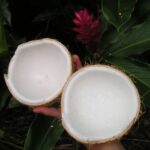The popularity of kava is growing very rapidly in the Western World. Today you can find kava bars or buy kava powder online, but kava has been a very important part of South Pacific cultures for hundreds or thousands of years. In this article, we will show you traditional kava ceremonies in different areas of the South Pacific.
Basic Facts About Kava
Kava (Piper methysticum) is a tree in the pepper family native to the South Pacific islands. The roots of the kava plant contain active elements (kavalactones) that act on your nervous system in different ways:
- Inhibit the reuptake of dopamine and norepinephrine
- Inhibit the action of the MAOB enzyme
- Bind to the GABA-A receptors
The result is that kava can be very useful for:
- Alleviating the symptoms of anxiety and depression
- Fighting stress
- Relaxing
- Fighting insomnia
- Coping with the cravings during opiate withdrawal
- Promoting mental clarity and enhancing cognitive functions
Traditional Kava Ceremonies
Today, you can find kava bars in America, but the experience in these bars has nothing to with traditional kava ceremonies. Kava grows naturally in the Pacific islands, such as Vanuatu, Tonga, Hawaii or Fiji. In these places, kava is a very important part of social and cultural life.
Kava is used in traditional ceremonies for:
- Welcoming important visitors
- Celebrating a new chief or king
- Resolving conflicts
- Weddings
- Funerals
But kava is also a typical drink in everyday social life. In many places in South Pacific, kava is a common drink as popular as wine or beer in other parts of the world. Furthermore, kava is still used in folk medicine to relax or to fight insomnia.
If you travel to a Pacific island, you may have the chance of attending a kava ceremony. In some places, kava ceremonies have become a typical attraction for many tourists. A kava ceremony can be slightly different from one place to another, as we will show you below.
Kava Ceremony in Fiji
In Fiji, kava is known as “yaqona”. The traditional kava ceremony (or Sevusevu) starts with the preparation of the kava drink. The chief is the first to drink the kava from a ceremonial bowl. Each participant claps their hands before and after drinking while saying “Bula”, which is a typical toast in Fiji. In this article, you can see Prince Harry attending a Fijian kava ceremony.
Kava in Hawaii
Hawaii is one of the places with a larger number of kava varieties. During the pre-colonial past, two of these varieties (Mo’i and Mahakea) were considered sacred and only the kings could consume them. Another variety (Hiwa) was offered to the gods.
Nowadays, kava is still very important in Hawaii and remains a part of traditional medicine and social life. Furthermore, kava bars have become very popular in the Hawaiian Islands and it is common to find plenty of locals and tourists in them.
Kava in Tonga
In Tonga, men are the ones that usually consume kava and there are few women who drink kava. In a sort of courtship ceremony, a boy asks a girl to prepare kava for him and his friends. The girl then prepares and serves the beverage. The process of preparing the kava drink is known as Faikava.
But there are also kava clubs (kalapu), that are very popular. People gather in these clubs to socialize and relax. You can also find kava gatherings in churches (Kava fakasiasi).
Kava in Vanuatu
Vanuatu is generally acknowledged as the place where kava originated. Maybe that is why kava is still incredibly popular in Vanuatu. In Port Vila, the capital of Vanuatu, there are more than 250 kava bars. So, if you travel there, you can enjoy a kava drink among the local population and tourists.
The traditional ways of preparing kava in Vanuatu are grinding the kava root in a grinder stone or even chewing the root before preparing the drink, which people then drink in a coconut shell. However, these preparation methods are not easy to find in big cities and kava bars. So, if you want to see how the native population originally prepared the kava drink, you should visit villages rather than urban areas.
The national currency also features images of kava ceremonies and kava plants.
Precautions When Taking Kava: Side Effects and Interactions
If you have the chance of attending a kava ceremony, you should be aware of kava’s side effects and interactions. Of course, consuming a kava drink is not going to do you any harm. But even so, there are some side effects that you should know.
Kava’s side effects include:
- Dry mouth and dry eyes
- Dizziness
- Stomach upset
- Dehydration
- Constipation
These side effects are commonly the result of high doses. Also, kava could damage your liver in the long term.
Additionally, kava can interact with SSRIs, anxiolytics, or antidepressants. Therefore, if you are using any of these medications you should avoid kava.



